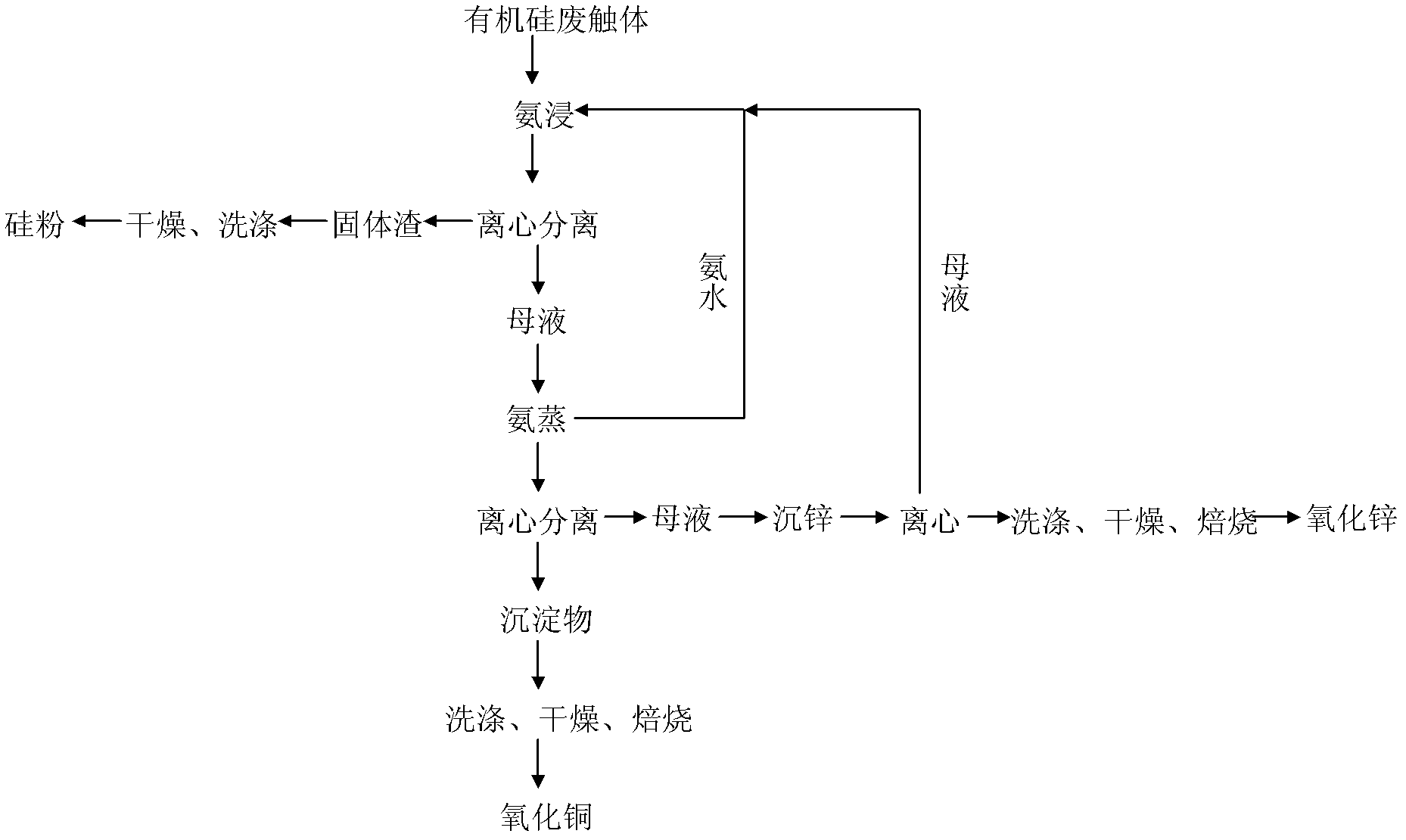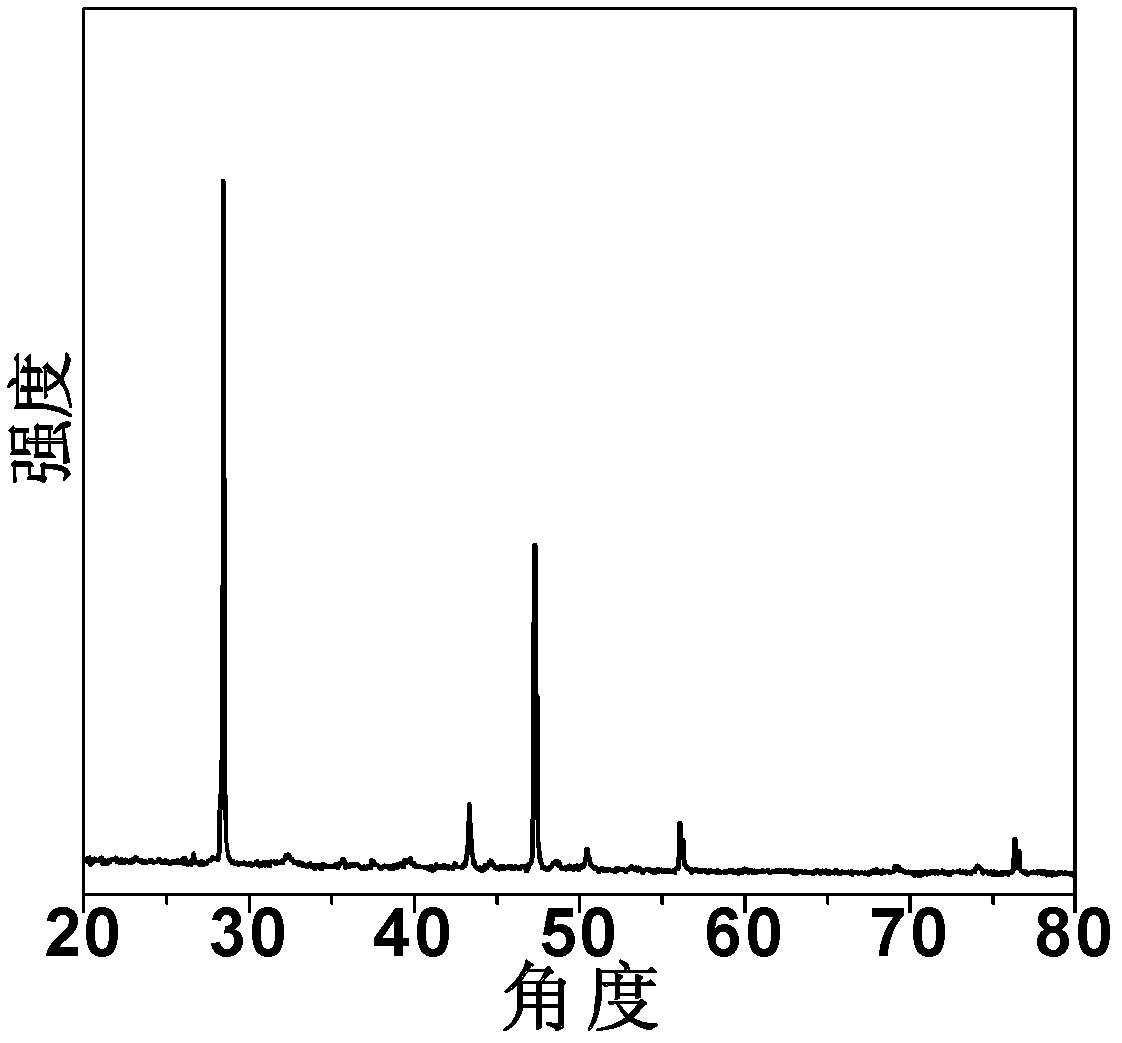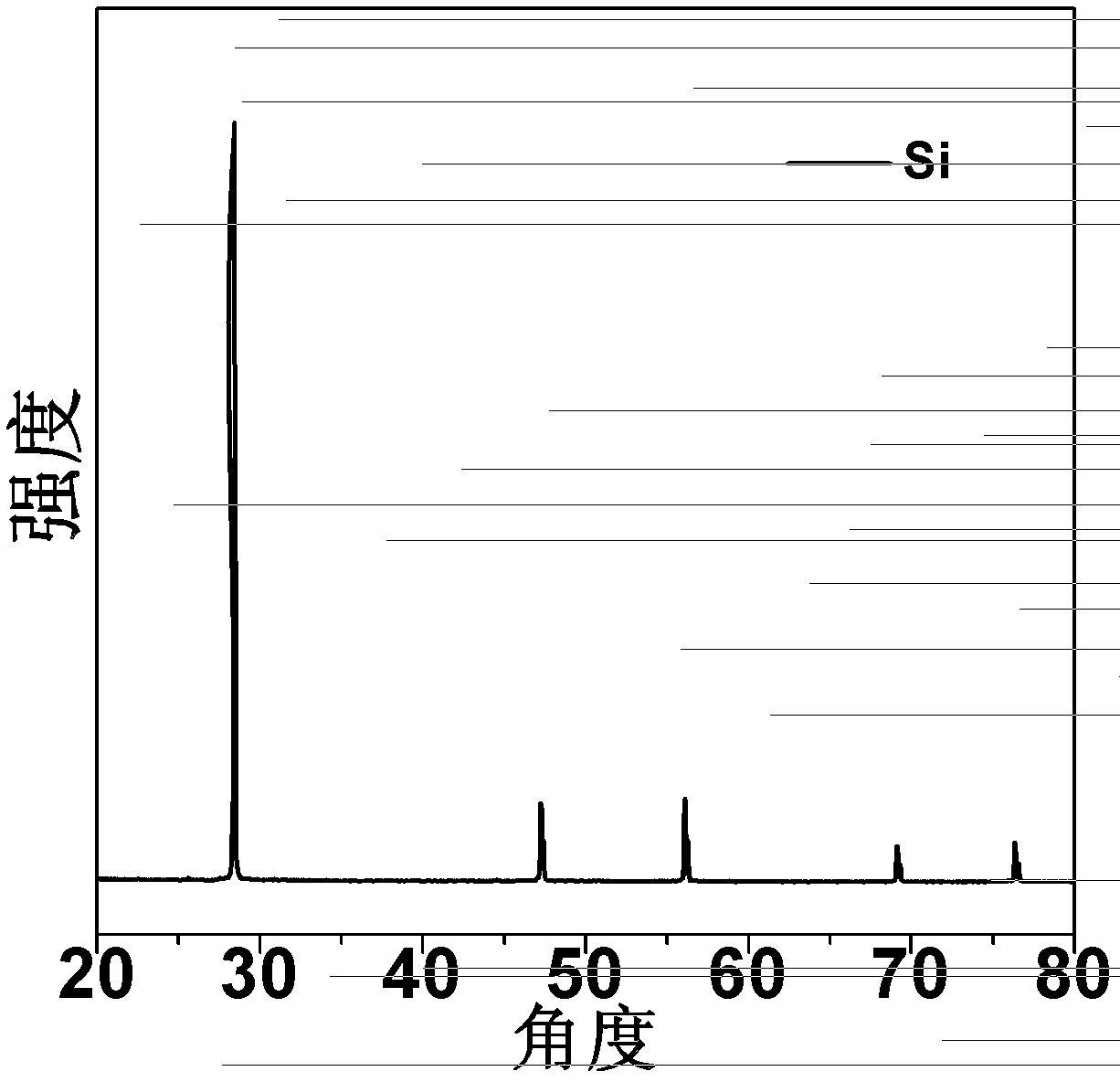Method for recycling copper oxide and zinc oxide from organosilicon spent contact mass
A technology of organosilicon waste contacts and copper oxide, which is applied in copper oxide/copper hydroxide, chemical instruments and methods, zinc oxide/zinc hydroxide, etc., can solve the problems of complex process flow and environmental secondary pollution treatment costs, etc. , to achieve high economic benefits, facilitate large-scale treatment, and reduce treatment costs
- Summary
- Abstract
- Description
- Claims
- Application Information
AI Technical Summary
Problems solved by technology
Method used
Image
Examples
Embodiment 1
[0034]72.0kg of ammonia (25.0wt%) and 34.0kg of ammonium carbonate are added to 250.0kg of water to form a mixed solution (the mol ratio of ammonia to ammonium carbonate is 3.0), and then 100.0kg of waste contacts (containing copper 15.0wt%, zinc 1.5wt%, the mass ratio of ammonia-ammonium salt to waste contact body is 1.06), and stirred in air at 20°C for 8h. After filtering or centrifuging, the solid slag was washed and dried to obtain 80.0kg of silicon powder. Raise the temperature of the mother liquor after centrifugation to 40°C and keep it warm for 10 hours. A large amount of blue-green precipitates will be produced in the solution. At the same time, the released ammonia gas can be absorbed by 10wt% ammonia water and can be recycled as a raw material for impregnating waste contacts. After filtration or centrifugal separation, the precipitate was washed, dried, and calcined at 450° C. for 5 hours to obtain 18.0 kg of finished copper oxide with a purity of 97% and a total re...
Embodiment 2
[0041] 80.0kg of ammonia water (25.0wt%) and 45.0kg of ammonium carbonate are added to 200kg of water to form a mixed solution (the mol ratio of ammonia to ammonium carbonate is 2.5), and then 100.0kg of waste contacts (containing copper 15.0wt%, zinc 1.5 wt%, the mass ratio of ammonia-ammonium salt to waste contact body is 1.25), stirred at 70°C with air for 6h, filtered or centrifuged, washed and dried the solid slag to obtain 78.0kg of silicon powder. Raise the temperature of the separated mother liquor to 80° C. and keep it warm for 5 hours. A large amount of blue-green precipitates will be produced in the solution. At the same time, the released ammonia gas can be absorbed by 10wt% ammonia water and can be recycled as a raw material for impregnating waste contacts. After filtration or centrifugation, the precipitate was washed, dried, and calcined at 500°C for 4 hours to obtain 18.5kg of finished copper oxide with a purity of 96% and a total recovery of 98%. Add 3.5kg of ...
Embodiment 3
[0043] Add 91.0kg of ammonia water (25.0wt%) and 40.0kg of ammonium carbonate into 200kg of water to form a mixed solution (the mol ratio of ammonia to ammonium carbonate is 3.2), then add 100.0kg of waste contacts (containing copper 15.0wt%, zinc 1.5 % by weight, the mass ratio of ammonia-ammonium salt to waste contact body is 1.31), stirred at 100° C. with air for 1 h, filtered or centrifuged, washed and dried the solid slag to obtain 79.5 kg of silicon powder. Raise the temperature of the mother liquor after centrifugation to 100°C and keep it warm for 1 hour. A large amount of blue-green precipitates will be produced in the solution. At the same time, the released ammonia gas can be absorbed by 10wt% ammonia water and can be recycled as a raw material for impregnating waste contacts. After filtration or centrifugation, the precipitate was washed, dried, and calcined at 500°C for 6 hours to obtain 18.2kg of finished copper oxide with a purity of 96% and a total recovery of 9...
PUM
| Property | Measurement | Unit |
|---|---|---|
| recovery rate | aaaaa | aaaaa |
Abstract
Description
Claims
Application Information
 Login to View More
Login to View More - R&D
- Intellectual Property
- Life Sciences
- Materials
- Tech Scout
- Unparalleled Data Quality
- Higher Quality Content
- 60% Fewer Hallucinations
Browse by: Latest US Patents, China's latest patents, Technical Efficacy Thesaurus, Application Domain, Technology Topic, Popular Technical Reports.
© 2025 PatSnap. All rights reserved.Legal|Privacy policy|Modern Slavery Act Transparency Statement|Sitemap|About US| Contact US: help@patsnap.com



